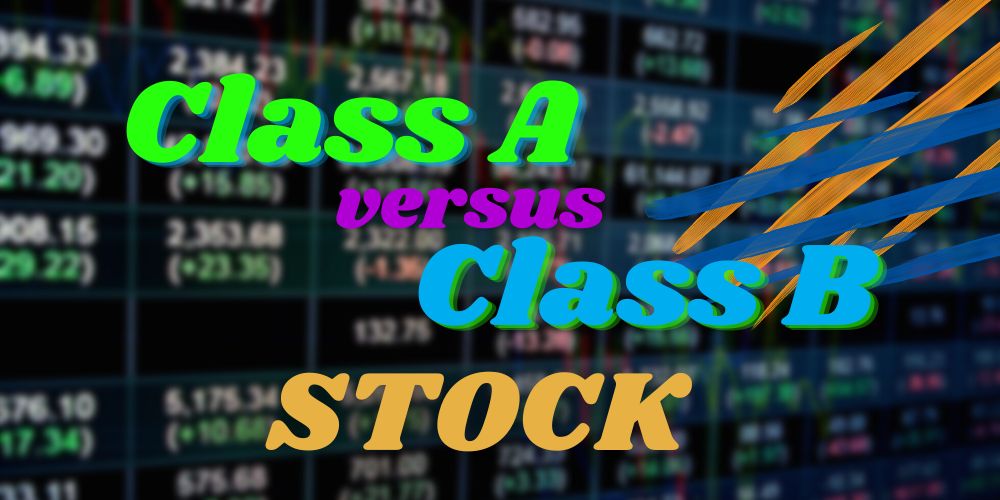When you invest in a company, you may have the option to buy Class A or Class C stock. But you may be wondering, which would be a better investment? Keep on reading for a breakdown of the differences.
What Is Class A Stock?
Class A stocks are shares with the most voting rights of any common stock.
Generally speaking, this means that shareholders with class A shares have more influence over corporate decisions than those with other classes, such as class B shares and class C shares.
However, companies are not required by law to set up their share classes in this manner.

Class A shares cannot be traded by the holders or sold to the general public, but they are first on the list in terms of dividend payments and protection.
What Is Class C Stock?
Class C stock is a type of common stock that typically comes with fewer to no voting rights (depending on the company).
Instead, owners of class C stock have the right to receive dividends and the option to sell their shares on the market.
Class C stock can be issued by both public and private companies, though it is more commonly found in publicly traded companies.
Companies that offer class C stock often do so for various reasons, including as an incentive for key employees or to help fund growth initiatives through cash dividends.
In some cases, company founders may also issue newly created class B shares as part of a plan to offset employee stock options or increase overall shareholder value over time.
Class A vs Class C Stock
The number of voting rights granted to the shareholder often distinguishes Class A shares of stock from Class C shares. In general, Class A stockholders have more influence.
These rights include voting on shareholder proposals, electing members to the board of directors, and receiving dividends if the company makes such a distribution.

Class C stock is less common than class A stock and has fewer shareholder rights. Typically, there are no voting rights associated with these types of shares in some companies.
The biggest difference between Class A and Class C stocks lies in how each one can be converted into another type of share.
If a holder wishes to convert their Class A or Class B shares into Class C shares, they must do this in a public offering.
There are other differences between different classes of shares regarding issuance procedures, payment methods, and associated costs.
So if you want to purchase or sell a particular class of shares for your financial benefit, it is important to have a detailed understanding of each type, so there are no surprises later on.
Share selling is a common practice in the world of finance. It refers to the process of transferring ownership of company stock from one entity to another.
Share sale and purchase can be done either by a private transaction (informal transaction between two individuals) or through secondary markets.
Regarding share selling, Class C shareholders can sell their holdings anytime they desire without the board’s permission.
This is because Class A and B shareholders must seek permission from the board if they wish to sell their stake on secondary markets.
Additionally, suppose a person buys shares from the public market. In that case, they will become a shareholder of Class C stock as it has fewer to no voting rights and allows immediate selling without any restrictions.
Class A, B, and C are all types of shares that offer different levels of priority regarding dividends.
Class A shares have the highest priority, meaning they receive regular dividends before any other class of shares.

Classes B and C fall lower on the priority list, receiving dividends only after class A shareholders have been paid.
The most popular class of shares is A, which carries a front-end load that must be paid upfront or at purchase.
These funds could appear expensive initially, but they might become less expensive if kept for a long time.
In contrast to the A share, the B share class has a back-end load or a commission that is paid when the investor sells the share. The longer you own the share, the less this cost will eventually be.
The C-share class charges a level-load, or annual cost, of about 1% for the fund’s duration.
But if C-shares are sold within a year, they frequently include a potential delayed sales charge that could be applied.
The annual administration and maintenance cost charged by the firm, known as the expense ratio, is often higher for B and C shares than it is for A shares.
The safest stock class is Class A shares.
These shares are typically held by senior management, executives, owners, and firm founders. They also provide the greatest degree of voting privileges.

Aside from voting power, whoever owns Class A shares receives payment first when a company distributes dividends.
Additionally, a Class A shareholder enjoys investment protection in the event of a company failure.
When a business fails, debtors are the first to receive payment. Class A stockholders come next in the chain.
This means they have a better chance of getting their investment back than Class B shares or C shares.
Class B shares are a common stock class with lower dividend priority and fewer voting rights than Class A shares.
Class B shares are typically offered by companies with more mature growth opportunities who need capital for expansion.
Many large companies that have already gone public offer only this type of equity since it allows them to raise additional funds for growth without sacrificing some control over their operations.
Regarding buying shares, each class has its own advantages and disadvantages. Still, many investors prefer the perks that come with Class A shares.
Class A shareholders often enjoy preferential treatment regarding dividends and capital gains distributions.

Class A common stock could be the best option if you plan to invest long-term.
However, if you are a medium-term investor, who intends to hold a stock long-term but for less than 10 years, then consider Class B common stock classes.
When deciding whether to invest in shares A and C, it’s important to consider the duration of your investment.
Class A shares are more suitable for long-term investors who plan to hold onto their investment for several years or even decades.
Class A has the highest voting power of all the company’s class shares, so if you’re interested in gaining influence within your company, Class A is the perfect fit.
On the other hand, Class C shares are recommended for short-term investors who keep their investment for at least a year or so.
Class C shares have the potential for significant volatility that can be profitable for investors.
The price to own this stock will rise over time; therefore not a wise investment over the long term.
Final Thoughts
Investors that are looking at different class shares should know the difference between Class A, B, and C.
Each share has different benefits, with Class A having the most privileges.
Class A shares are typically best for long-term investors, while Class B and C may be better suited for short-term or medium-term investment strategies.
Keep these things in mind as you consider which type of share is right for you.
You might also like:
Penny Stocks vs Blue-Chip Stocks


 Tags:
Tags:










